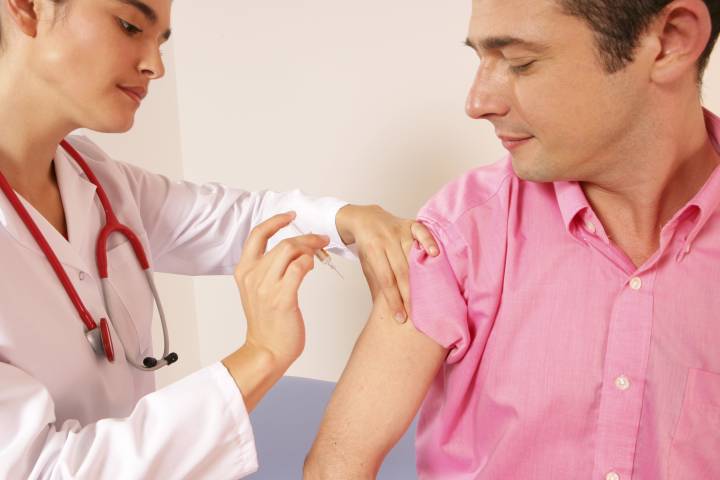There are diseases that you are aware of and take active measures against them. And then there are diseases that you have no idea about and only get to know when you are infected or know someone infected by them. In this article, we will talk about coxsackievirus infections, what they are, their causes, symptoms, and treatment. Read on to find out everything that you need to know about this peculiar group of infections.
In this article:
What Is It?
Causes of Coxsackievirus Infections
Symptoms of Coxsackievirus Infections
Is It Contagious?
What Can Happen?
Treatment for Coxsackievirus Infections
FAQS
All You Need to Know About Coxsackievirus Infections
What Is It?
Coxsackieviruses are ribonucleic acid (RNA) viruses that can create muscles, lungs, and heart disease, as well as HFMD, otherwise known as hand, foot, and mouth disease. It is under the Picornaviridae, a family of linear, nonenveloped, single-stranded, positive-sense RNA viruses, and belongs to the genus Enterovirus. This genus includes the likes of echovirus and poliovirus as well. Enteroviruses are very widespread and significant human pathogens, and usually, they facilitate their spread by the fecal-oral method. Polioviruses and coxsackieviruses have many traits in common. As there is now control of poliovirus infections in most parts worldwide, more consideration is being given on comprehending non-polio enteroviruses such as the coxsackievirus.
These viruses are grouped into two different classifications, group A and group B viruses. This is based on initial reflections of their pathogenicity in newborn mice. Group A coxsackieviruses were seen to trigger a lax paralysis (which was instigated by simplified myositis). On the other hand, group B coxsackieviruses were observed to cause a paroxysmal paralysis (because of focal muscle damage and deterioration of neuronal cells).
Causes of Coxsackievirus Infections
The viruses can transmit from person to person, typically on dirty hands and facades soiled by human excretions, where the viruses can reside for many hours and even days. They are not demolished by stomach acids either.
The microorganisms can be present in discharges and corporeal liquids of people who are infected. Respiratory secretions from infected patients can spread the virus. When ill people rub their gooey nostrils and then afterward, come in contact with a surface, that surface can shelter the virus and turn into an infection source. This contagion is passed around in the event of another individual coming in contact with the infected surface and then touching their mouth and/or nose.
People who have conjunctivitis can pass around the virus by touching other people or a surface after touching their eyes. This condition can pass quickly and appear within just a single day of contact with the virus. The virus can go around if dirty hands get soiled with fecal matter and then faces are touched with the same hands. This is particularly important within daycare facilities where diapers are frequently handled. Diarrhea ranks among the most usual signs of gut infections caused by the virus.
Symptoms of Coxsackievirus Infections
Coxsackieviruses can create several symptoms. It should be noted that about 50% of all kids with an infection from this virus have no discernible indications. The remaining proportion can suffer from high fever, aching muscles, and headaches. Some patients also develop abdominal distress, sore throats, or nausea. A kid with such an infection may feel warm but have no other visible signs of discomfort. In most children, the fever lasts about three-four days and then goes away.
Is It Contagious?
Coxsackieviruses are quite contagious. They can be spread from person to person on grimy hands and surfaces dirtied by feces. They also can be passed through droplets of liquid sprayed into the air when people with infection cough or sneeze.
When there is a wave of coxsackievirus infections, the infection risk is most among newborns and kids below five years old. The virus passes around easily in group settings such as those found in schools and childcare centers. People are most contagious in the first week of illness.
What Can Happen?
Coxsackieviruses can trigger symptoms that impact various parts of the body, such as:
- HFMD, that causes throbbing blisters on the tongue and in the throat, hard palate, gums, the palms of hands, insides of the cheeks, and soles of the feet.
- Herpangina, a kind of throat infection, that also forms red-ringed eruptions on the tonsils and the soft palate, which is the soft posterior area of the mouth roof.
- Hemorrhagic conjunctivitis, an infection that impacts the sclerae. This usually starts as pain in the eyes, followed rapidly by watery, bloodshot eyes with puffiness, hazy vision, and extra sensitivity to light.
Sometimes, these viruses can cause infections of a more serious nature that may require hospital treatment. These infections include:
- Viral meningitis, an infection of the meninges, the membranes that surround the spinal cord and brain
- Encephalitis, a neuro infection
- Myocarditis, a cardiac muscle infection
Treatment for Coxsackievirus Infections
Depending on the symptoms and the kind of infection, the medical professional may prescribe medication to make your kid feel healthier and more relaxed. Please keep in mind that antibiotics only work against bacteria, so they will be ineffective against infections caused by coxsackieviruses.
Acetaminophen or ibuprofen can be administered to get relief from minor pains and aches. Plenty of fluids can be given to avoid dehydration. If there is a fever and it lasts for more than a day, or if your kid shows any other serious symptoms of a coxsackievirus infection, make sure to give your doctor a call.
Most children with a minor coxsackievirus infection recuperate fully after just some days without requiring any extra medical care.
FAQS
What is the Period of Incubation for Infections by Coxsackieviruses?
It takes an average of one to two days for the symptoms to develop once the coxsackievirus enters the body.
What is the Period of Contagion by Coxsackievirus Infections?
Patients are most infectious in the very first week of sickness. However, the virus may be extant for up to a whole week after the symptoms are resolved. It may reside longer in children and in patients who have weaker immune systems.
Which Specialists Treat a Coxsackievirus Infection?
For most patients with a coxsackievirus infection, pediatricians, internists, and family practitioners will suffice. If there is a lack of certainty about the specific diagnosis, a specialist in infectious diseases can be consulted.
In case severe complications need to be managed, a cardiologist or intensive-care specialist may be needed.
To conclude, coxsackievirus infections aren’t dangerous, provided they are treated on time. Therefore, make sure that you are always in contact with your doctor.
References
https://www.ncbi.nlm.nih.gov/pmc/articles/PMC1986057/













